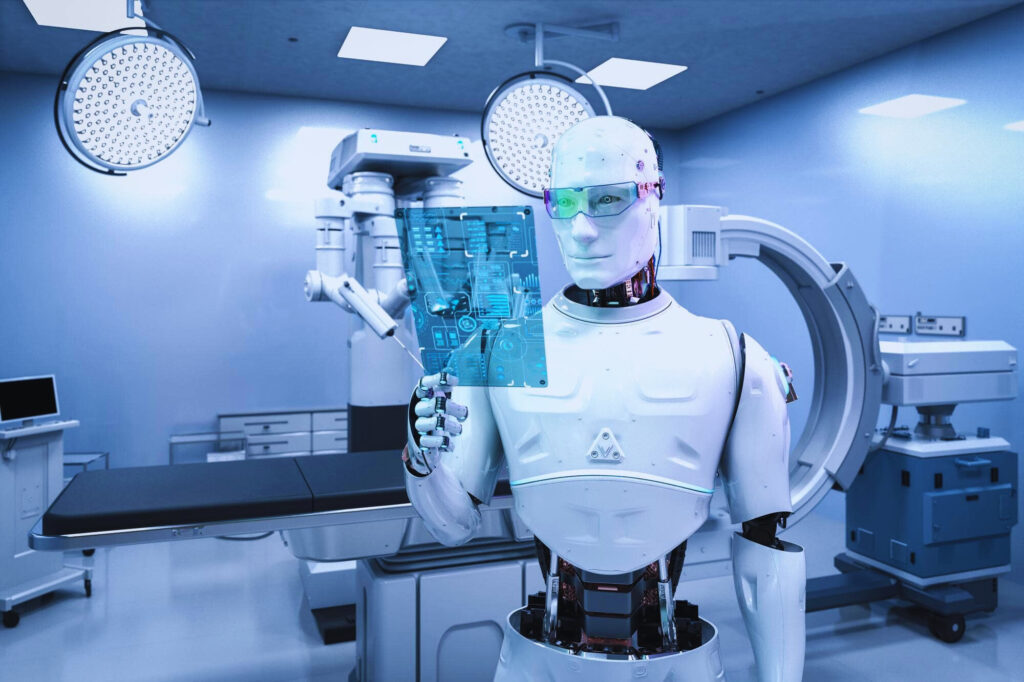In the dynamic landscape of healthcare, technological advancements continuously reshape the way we approach diagnosis, treatment, and patient care. The role of Robotics emerges as a transformative force, revolutionizing various aspects of the medical field. From precision surgeries to streamlined administrative tasks, robotics is at the forefront of innovation, enhancing efficiency, accuracy, and patient outcomes.
Enhancing Surgical Precision
Robotic-assisted surgery stands as the pinnacle of medical advancement, offering surgeons unparalleled precision and control. Through minimally invasive procedures, robotic systems empower surgeons to perform complex operations with enhanced dexterity and accuracy. By incorporating robotic technology into surgical workflows, healthcare professionals can achieve remarkable outcomes, including reduced blood loss, shorter hospital stays, and faster recovery times for patients.
Advancing Rehabilitation Therapies
Beyond the operating room, robotics plays a vital role in rehabilitation therapies, facilitating recovery and improving the quality of life for patients. Robotic exoskeletons and assistive devices assist individuals with mobility impairments, enabling them to regain independence and mobility. These innovative technologies provide personalized support, adaptive feedback, and targeted exercises, optimizing rehabilitation programs for diverse patient needs.
Automating Healthcare Logistics
Robotics revolutionizes healthcare logistics, streamlining supply chain management, inventory control, and administrative tasks, alongside its clinical applications. Automated robots navigate hospital corridors, delivering medications, supplies, and equipment with precision and efficiency. Automating routine tasks in healthcare facilities reallocates resources, reduces costs, and enhances workflow efficiency, ultimately improving patient care.
Personalizing Patient Care
The integration of artificial intelligence (AI) and robotics enables healthcare providers to deliver personalized, patient-centric care. AI-powered robots analyze vast amounts of patient data, identifying patterns, predicting outcomes, and recommending tailored treatment plans. This data-driven approach empowers healthcare professionals to make informed decisions, optimize treatments, and improve patient outcomes in various medical specialties.
Facilitating Remote Healthcare
In an era marked by digital connectivity, robotics facilitates remote healthcare delivery, extending medical services beyond traditional clinical settings. Telemedicine platforms leverage robotic technologies to enable virtual consultations, remote monitoring, and home-based care interventions. Through real-time communication and remote diagnostics, patients can access quality healthcare services, regardless of geographical barriers or physical limitations.
Ensuring Ethical and Regulatory Compliance
As robotics becomes increasingly integrated into healthcare systems, it is imperative to prioritize ethical considerations and regulatory compliance. Healthcare organizations must follow strict ethical guidelines and regulations to ensure patient safety, data privacy, and transparency in robotic applications. Fostering collaboration among healthcare professionals, engineers, policymakers, and ethicists can develop responsible robotic solutions maintaining high patient care and ethical standards.
Frequently Asked Questions (FAQs)
1. What is robotics in healthcare?
Healthcare robotics encompasses robotic technologies in surgery, rehabilitation, logistics, patient care, and telemedicine. These technologies aim to enhance efficiency, accuracy, and patient outcomes by leveraging automation, artificial intelligence, and robotic assistance.
2. How does robotics enhance surgical precision?
Robotics enhances surgical precision by providing surgeons with advanced tools and technologies to perform complex procedures with enhanced dexterity and control. Robotic-assisted surgery allows for minimally invasive techniques, reducing blood loss, minimizing tissue damage, and promoting faster recovery times for patients.
3. What are the benefits of robotic rehabilitation therapies?
Robotic rehabilitation therapies offer numerous benefits, including personalized support, adaptive feedback, and targeted exercises to assist individuals with mobility impairments. Robotic exoskeletons and assistive devices enable patients to regain independence, improve mobility, and enhance their overall quality of life through tailored rehabilitation programs.
4. How does robotics streamline healthcare logistics?
Robotics streamlines healthcare logistics by automating routine tasks such as supply chain management, inventory control, and administrative processes. Automated robots navigate hospital environments, delivering medications, supplies, and equipment with precision and efficiency, thereby optimizing workflow efficiency and reducing operational costs.
5. How does artificial intelligence (AI) contribute to personalized patient care?
Artificial intelligence (AI) plays a crucial role in personalized patient care by analyzing vast amounts of patient data, identifying patterns, predicting outcomes, and recommending tailored treatment plans. AI-powered robots empower healthcare professionals to make informed decisions, optimize treatment strategies, and improve patient outcomes across diverse medical specialties.
6. What role does robotics play in remote healthcare delivery?
Robotics facilitates remote healthcare delivery by enabling virtual consultations, remote monitoring, and home-based care interventions through telemedicine platforms. These technologies leverage robotic solutions to ensure real-time communication, remote diagnostics, and access to quality healthcare services, regardless of geographical barriers or physical limitations.
Embracing Collaborative Innovation
The future of robotics in healthcare hinges on collaborative innovation, uniting interdisciplinary expertise to address complex challenges and drive meaningful impact. By fostering partnerships between healthcare institutions, research laboratories, technology companies, and regulatory bodies, we can accelerate the development and adoption of transformative robotic technologies. Together, we can harness the full potential of robotics to revolutionize healthcare delivery, improve patient outcomes, and shape the future of medicine.
In conclusion, robotics holds immense promise in revolutionizing healthcare delivery, from enhancing surgical precision to personalizing patient care and facilitating remote interventions. By embracing innovation, collaboration, and ethical considerations, we can harness the transformative power of robotics to advance healthcare and improve the lives of patients worldwide.

